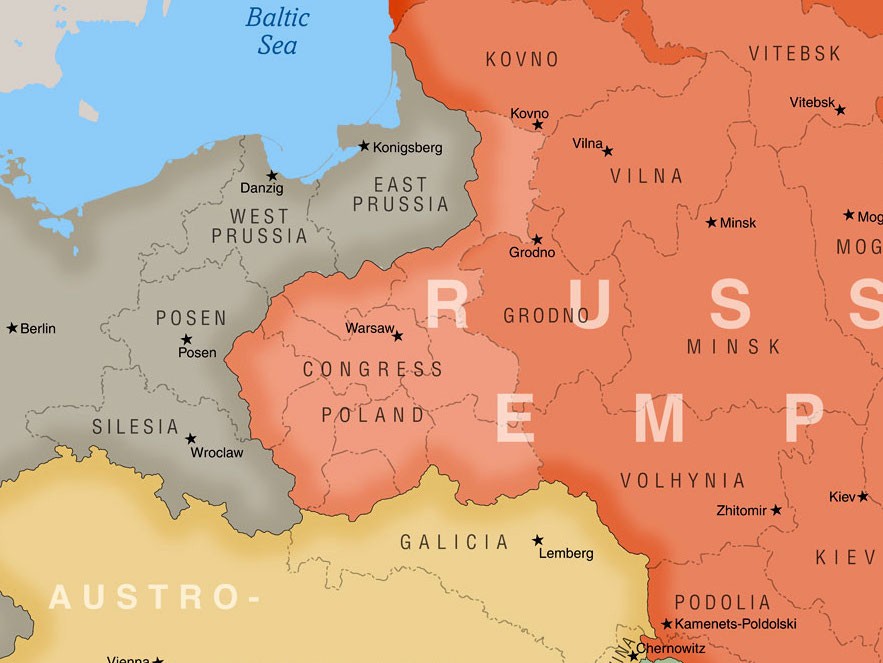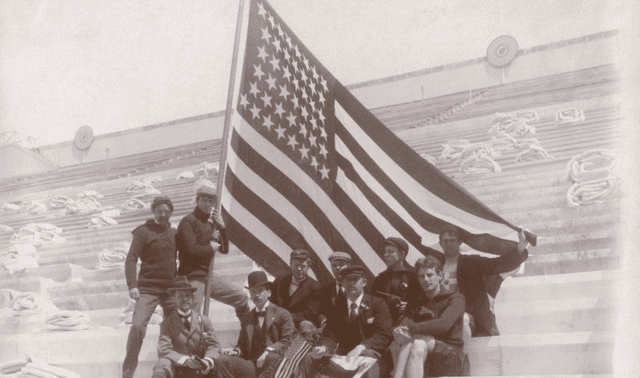
Genealogists researching Jewish ancestry in Eastern Europe face several difficulties. Differing official policies across the regions of Jewish settlement produced great variability in vital records. Laws and customs varied by nationality, and borders were constantly in flux. A single town may have gone through many border changes and governing entities during its history. The Jewish history timeline below will help you sort through the region’s complicated past.
The century and a half from the first partition of Poland (1772) until the end of World War I (1918) was a time of profound changes for East European Jewry. Poland ceased to exist as an independent entity as three continental empires—the Austrian Hapsburgs, tsarist Russia, and Teutonic Prussia—carved up the territory in a series of three partitions, leaving a meandering border that arbitrarily divided Jewish communities.
Following the defeat of Napoleon in 1815, the Congress of Vienna locked in a map of Central Europe that prevailed with minor adjustments until the end of World War I (1918). Under the Treaty of Versailles, Poland regained its independence (see the map above).
Each empire administered its acquired Jewish population differently:
- In the Polish territories that Prussia annexed, Napoleonic-era reforms led to the emancipation of some Prussian Jews as early as 1812.
- Austria acquired a tier of southern Poland on the north slope of the Carpathian Mountains called Galicia, which it administered with some autonomy for its local populations. Jews gradually obtained legal rights until achieving full emancipation in 1869.
- Russia was the most restrictive, designating a region called the Pale of Settlement in which Jews could live. The Pale comprised the acquired Polish lands as well as southern, formerly Ottoman provinces. Russia administered the central region of Poland, called Congress Poland after the Congress of Vienna, separately from the Pale. After a period of liberalization in the mid-19th century, a crackdown in 1882 following the assassination of the Tsar set off a wave of anti-Jewish violence. The pogroms and widespread poverty led to an earlier wave of migration from Russia than occurred elsewhere. Jews in the Pale were not granted citizenship rights until the Pale’s demise during the Russian Revolution.
Ashkenazi family researchers who have family branches from more than one of the imperial territories will have to contend with the mixture of laws, cultural values and beliefs that combined to determine everything from an ancestor’s chosen occupation to the family kugel recipe.
Regardless of which region your ancestors lived in, a few key dates affected Jews all over Eastern European. Here are some of the most important dates in the Jewish history timeline:
1772
The first partition of Poland creates Austrian Galicia and cedes Polish lands to Russia and Prussia.
1791
The Russian empress Catherine the Great establishes the Pale of Settlement, which dictated where the government allowed Jews to live.
1793
The second partition of Poland further expands Russian and Prussian holdings.
1795
The third partition of Poland brings the demise of the Polish-Lithuanian Commonwealth.
1815
The Congress of Vienna encodes European borders, which stand for 100 years.
1828
Prussian Jews are emancipated.
1869
Austrian Jews are emancipated.
1871
Prussia and various German states unite to form the German Empire.
1882
The Russian government enacts the “May Laws,” which restrict Jewish settlement and undo previous progressive policies. Meant to be temporary, the laws remain in place for more than 30 years.
1897
Jewish nationalism rises and the First Zionist Congress meets.
1918
Russian Jews are emancipated following World War I and the Russian Revolution.
1919
The Treaty of Versailles restores Poland as an independent entity.
For more on researching your Jewish roots in Eastern Europe, check out the May/June 2019 issue of Family Tree Magazine. The issue includes this timeline, plus a guide to the best resources for Jewish ancestry in modern Russia, Poland, Belarus and more.




